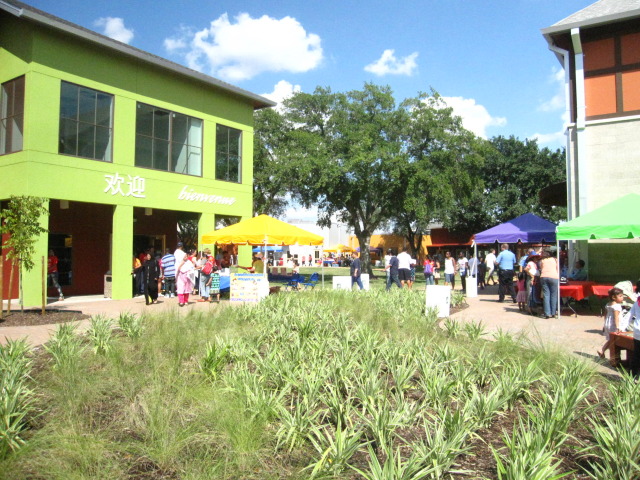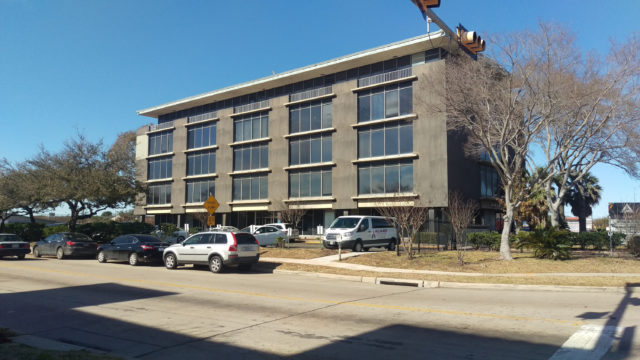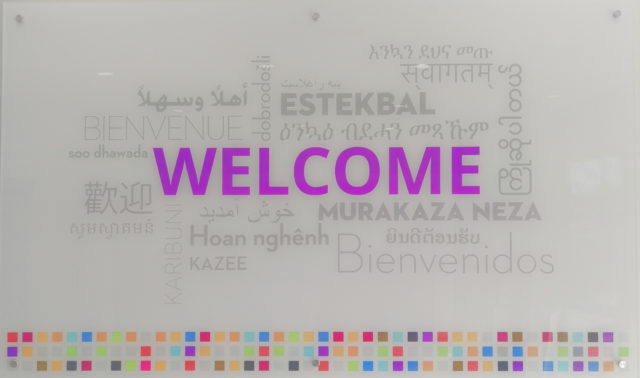In March 2018, Houston hosted the Funders’ Network Annual Conference to explore strategies for and stories behind creating more equitable, sustainable, and resilient communities. Rice Design Alliance created five tours in collaboration with the Funders’ Network for people interested in getting a first-hand look at Houston’s vibrant neighborhoods and unique approaches to tackling complex challenges. This tour visits the neighborhood of Gulfton, the first stop for many of Houston's Immigrants and Refugees.
 Points of interest on the Gulfton Walking Tour
Points of interest on the Gulfton Walking Tour
“Gulfton’s population is not monolithic—it includes refugees, undocumented, underdocumented, and mixed-status families,” says Kate Vickery, Executive Director of the Houston Immigration Legal Services Collaborative. The collaborative is a new model for bringing together funders, law schools, law firms, and nonprofits to pool resources and address the diverse but intersecting concerns of immigrant and refugee populations such as those in Gulfton. “With Hurricane Harvey, for example, the impact has played out differently for each group because refugees are eligible for FEMA funding while undocumented people are often afraid to try to access services.”
The neighborhood of Gulfton is Houston at its most diverse and densely populated. Apartment complexes built in the 1970s for “swingles” are now home to families of immigrants. Though it is nothing like the old Irish and Italian neighborhoods of New York and Boston in physical form, Gulfton contains many of the same joys and beauty of the urban, immigrant America of old. The streets are alive. Restaurants and markets with goods from around the world pack the strip malls. Gulfton is the international heart of Houston, a gateway between our city and the world.
The density and vibrancy that makes Gulfton such an excellent microcosm of Houston is best experienced on foot, though the lack of consistent sidewalks and frequent trip hazards do make the neighborhood difficult to traverse in places. The latest installment of our walking tour series shares the challenges that immigrants face in a blue city, red state environment. It describes the ways funders have actively organized and engaged to support this community in finding housing, getting kids into good schools, landing jobs, and securing healthcare and other services.
Gulfton Walking Tour: Points of Interest
1. KIPP Connect Primary, 6700 Bellaire Boulevard
At the corner of Tarnef and De Moss streets, apartments, shops, places of worship, social services, and schools show how such an intense mix can work beautifully as well as go terribly wrong. Many residents of the area do not have a car and can access what they need on foot and by transit. St. Luke’s Gethsemane has adapted its mission to serve the community around it. A mosque and halal market are down the street. KIPP, a charter school with a long waiting list, is across the street from a county health facility and a large conglomeration of apartments. At this site, two years ago, four-year-old Muhammad Ali Abdullah was run over walking with his siblings to their first day of school. The tragedy occurred when the child stepped in front of a METRO bus parked at the corner as a parent pulled around it. Connect Community is working with the anchoring institutions to better coordinate services like school buses and to make the streets safe for children to walk.
2. Jane Long Academy and Las Américas Newcomers School, 6501 Bellaire Boulevard
Las Américas Newcomers School is a model for a holistic approach to educating a large population of recent immigrants, including unaccompanied minors. The schools sits alongside Jane Long Academy where there are more than 50 different languages that are spoken by students. The school welcomes immigrant families from Mexico and Central America, as well as former refugees from all parts of the globe, such as Iraq, Afghanistan, Syria, Ethiopia, Congo, and Nigeria.
3. Baker-Ripley Neighborhood Center for Gulfton, Sharpstown, 6500 Rookin Street
Neighborhood Centers Inc.—renamed Baker-Ripley in 2017—embarked on a groundbreaking, multiyear participatory planning and design process to develop the Baker-Ripley Neighborhood Center, a community center and marketplace serving the residents of Gulfton and the adjacent Sharpstown neighborhood. Since its opening in 2011, this Baker-Ripley site has served tens of thousands of people. They have learned English, many have become citizens, and others have gained the skills to start businesses. The four-acre site includes five buildings that shape the public spaces and create a “village” feel. Each of the five buildings has a different use: one focuses on education, another on art, another on business and entrepreneurial activities, another on recreation and related activities, and another on health care.
4. Alliance for Multicultural Services, 6440 Hillcroft Street
The offices of the Alliance bookend the corridor of nonprofits and community centers. The building from the late 1960s has a small Ethiopian market on the first floor and sweeping views of Gulfton from the wraparound balcony on the top floor where the Community Cloth collaborative has a sewing workshop. The building buzzes with with people accessing services, including a driving school.
5. Afghan Village, 6413 Hillcroft Street
A great place to take in the diversity of Hillcroft strip malls that are even more astonishing than the typical and still remarkable strip mall in Houston. If their fresh bread, eggplant, spinach, and roasted meats are not your thing, try the Peruvian, Pakistani, Salvadoran, Cuban, or Ethiopian places nearby.


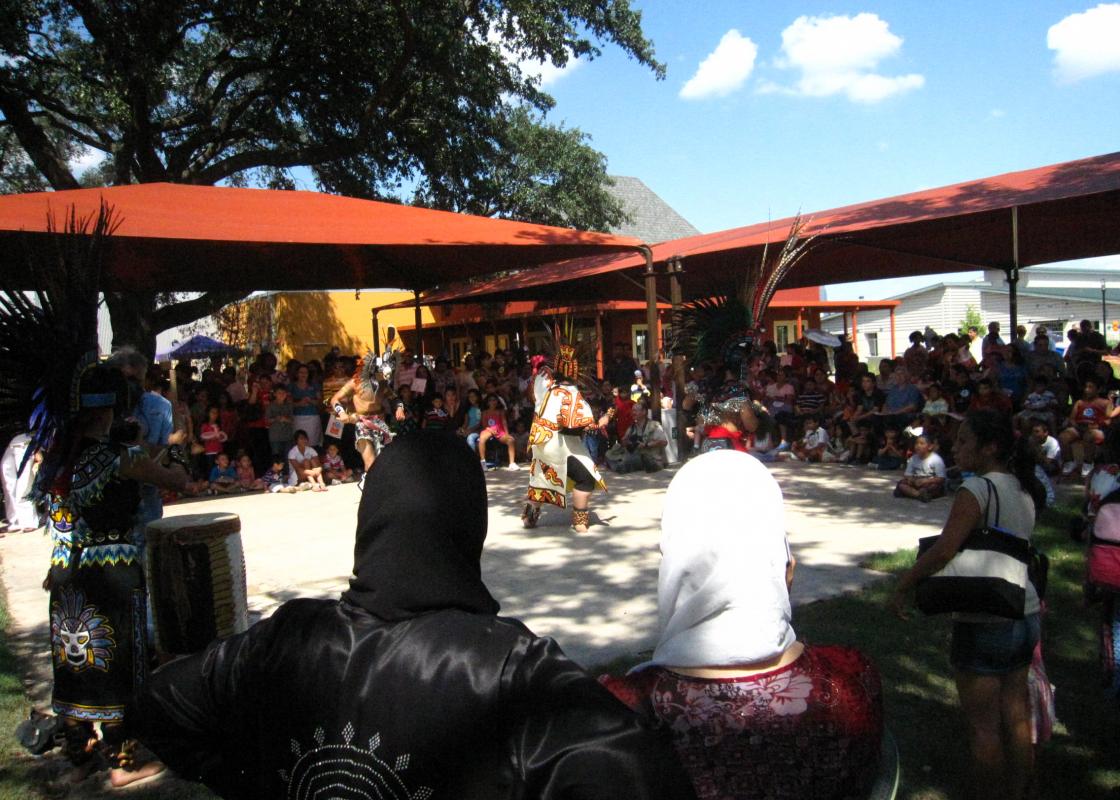
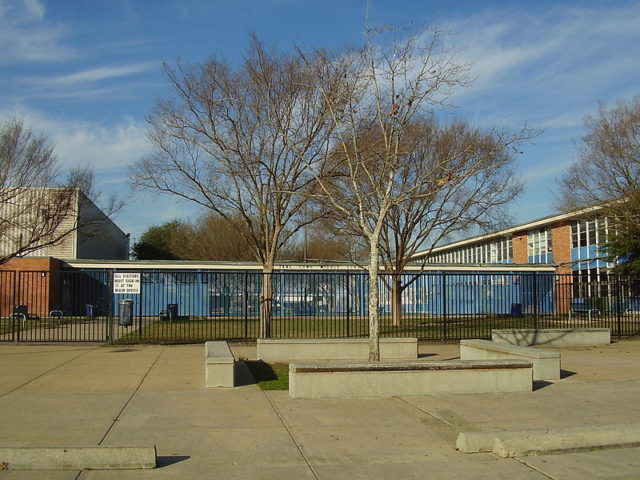 Las Américas Newcomers School sits on the campus of Jane Long Academy. The school currently includes students from Afghanistan to Zambia. Photo: Wikimedia Commons.
Las Américas Newcomers School sits on the campus of Jane Long Academy. The school currently includes students from Afghanistan to Zambia. Photo: Wikimedia Commons.